Understanding The Aging Face
The Aging Process
No one can avoid aging. But understanding how we age helps us defy it the best we can.
As we age, we all undeniably see changes in our faces and body. These changes can often be out of proportion to how we feel, potentially leading to decreased confidence and feeling of less self-worth. One of the common complaints we hear as surgeons is “I look older than I feel.” We may all have a sense of this feeling, but in order to understand how to combat these aging changes, it helps to understand how these changes occur.
As shown below, there are several factors that contribute to the aging face:
- Skin changes affected by time, genetics, and sun exposure
- Fat volume changes: loss in some regions and accumulation in others
- Loss of tone of facial muscles and ligaments
- Facial bone loss
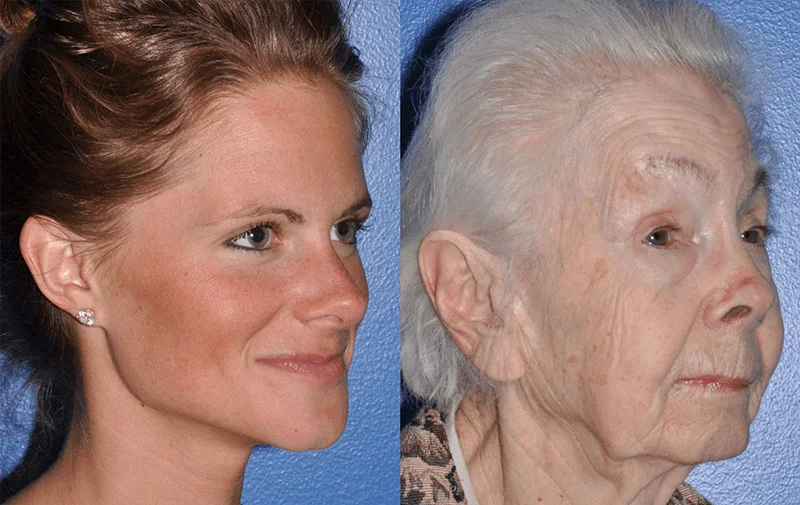
Skin Changes
As skin ages, it loses its elasticity and becomes thinner and drier. These changes result in coarser skin texture and a decreased ability to regain its original form when stretched. Over time, these changes lead to wrinkles (rhytids) overlying areas of muscle contraction.
Furthermore, pigment (color) changes with dark and discolored spots emerging on the skin, a process accelerated by sun exposure and hereditary factors. Skin texture and pigment changes can be counteracted by resurfacing techniques such as chemical peels, laser treatments, and dermabrasion. Below is an example of a woman who underwent resurfacing to smooth the texture of her skin around her eyes:
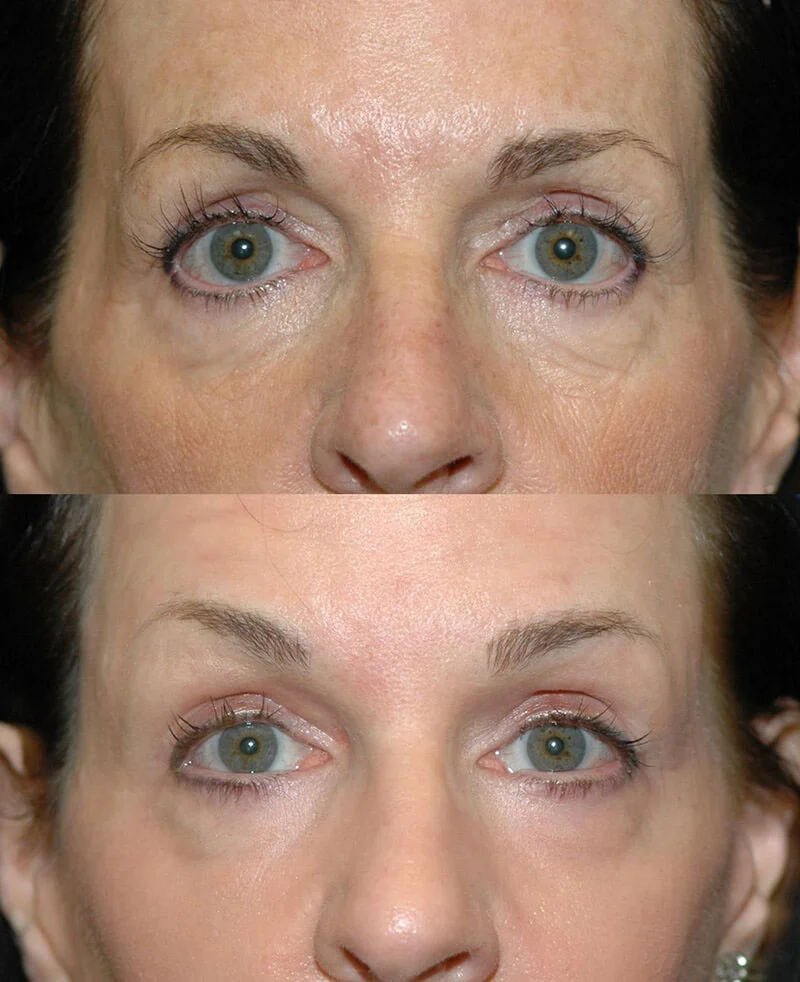
Skin wrinkles, especially those exacerbated by facial expression can be smoothened through the use of botulinum toxin injection:
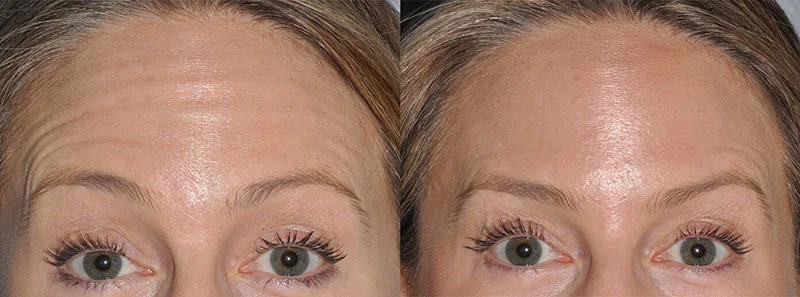
Facial Volume Changes, Bone Loss, and the Effects of Gravity
We can all appreciate the plump, vibrant appearance of a baby’s face. This vibrance is due to abundant facial fat underlying the skin. As we age, we lose facial fat volume and facial skeletal bone density. These changes combined with gravity and loosening of the facial ligaments and soft tissues contribute to the deeper facial changes we see with aging.
In the upper face, these changes are most evident with hollowing of the temples and deflation of the eyebrows. Around the eyes, excess skin of the upper eyelids is coupled with decreased fat of the upper eyelid and bulges in the lower eyelid resulting in a hollower upper eyelid and baggy lower eyelid.
Descent of cheek fat leads to flattening of the cheeks and depression of the transition zone between the lower eyelid and cheek with creation for infraorbital hollows and a more prominent tear trough. These changes can be treated non-surgically by adding volume with facial fillers:
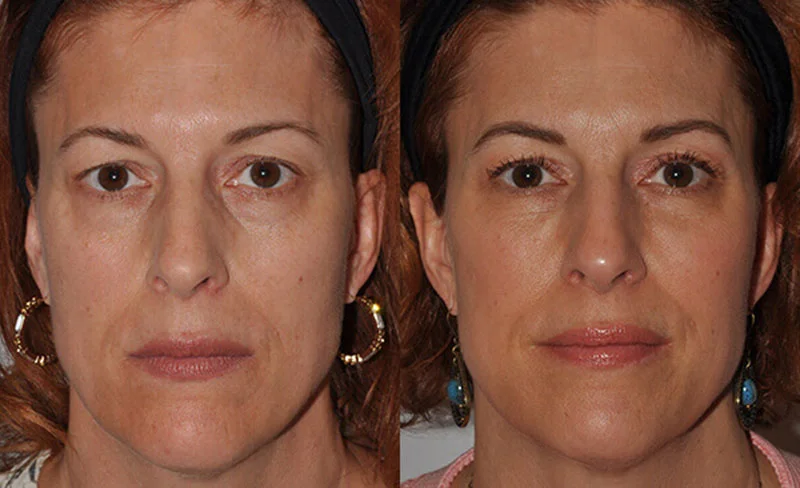
In the lower face these changes can lead to deepening of the nasolabial folds, marionette lines, formation of jowls, blunting of the angle between the chin and neck, and banding of the neck.
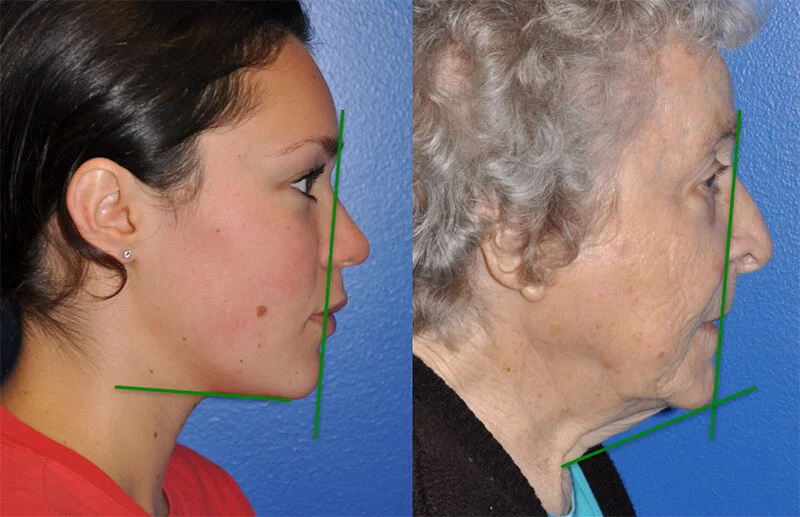
Adding volume with facial fillers or fat transfer can soften nasolabial folds, marionette lines and jowling as shown below:
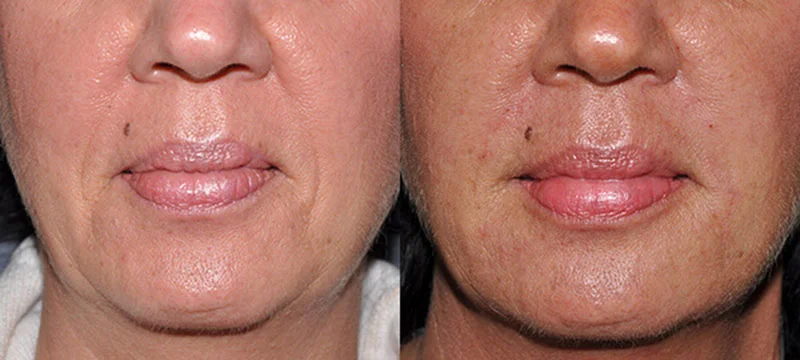
More definitive correction of jowling, marionette lines and neck banding can be achieved with face and neck lift surgery as shown below:
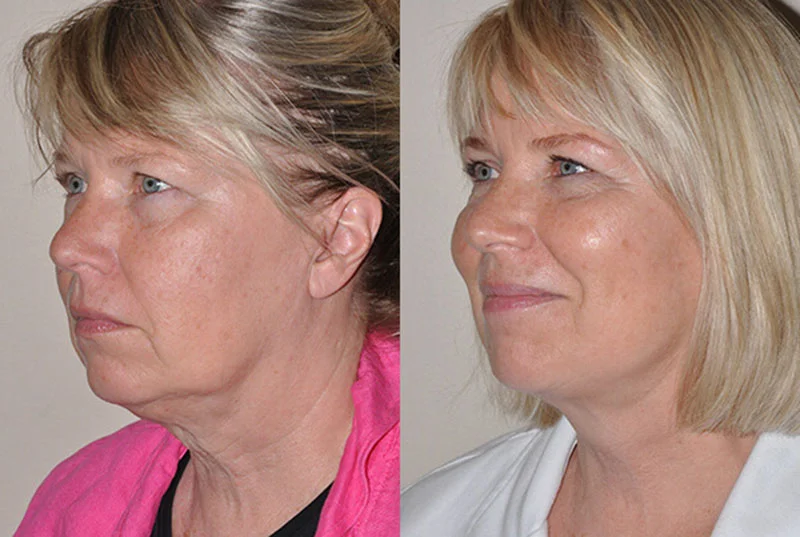
Evaluation of the Aging Face: An Overview
Now that we better understand the aging process of the face, how is a patient evaluated? The most important aspect of a proper evaluation is understanding the patient’s concerns. Listening to the patient can properly guide and focus the evaluation. Though our overall goal is to achieve harmonious facial rejuvenation, each patient has different perspectives, needs, and expectations. Thus, patients with very similar anatomic features, may desire completely different treatment plans.
First and foremost, our team addresses the patient’s concerns: “What is bothering you the most? What would you like improved? Once those concerns are fully appreciated, an evaluation is performed.
An evaluation typically begins with the eyes and upper face, which includes the eyebrows and forehead, the upper and lower eyelids, as well as the cheek. The upper eyelids cannot be properly evaluated without considering the eyebrows, as their positions are intimately associated. The eyebrow position and projection can determine the fullness of the upper eyelid, so it cannot be ignored when examining the upper eyelid. Furthermore, it is essential to understand the gender differences in facial anatomy and ideal aesthetics, as this determines proper evaluation of eyes and eyebrows. Similarly, the lower eyelid cannot be properly evaluated without examining cheek position and volume. A volume deficient and descended cheek mound can accentuate the lower eyelid bagginess by creating a visible depression between the two, commonly named the “tear trough”. Cheek descent can also lead to more prominent “nasolabial folds,” the fold of the smile line that extends from the bottom edge of the nose down to the corner of the mouth.
Once the upper face is properly evaluated, the exam transitions to the lower face. Though the eyes are often the central focus of the face, the idea facial rejuvenation has to address the lower face and neck to achieve upper-lower face harmony. The lower face aging changes that are typically evaluated include loss of lip volume and projection, wrinkling and deepening of folds around the mouth, jowling seen at the jawline, fat accumulation and laxity within the neck.
Throughout this evaluation, skin changes such as wrinkling and pigment changes, are being evaluated as these features cannot be ignored if one is to achieve ideal rejuvenation.
After the evaluation is complete, we work with you to create a plan that meets your goals and needs in the safest way possible.
Contact us below or call at 206 599 Face (3223). We’re here to help answer your questions or to get you started with a consultation.

